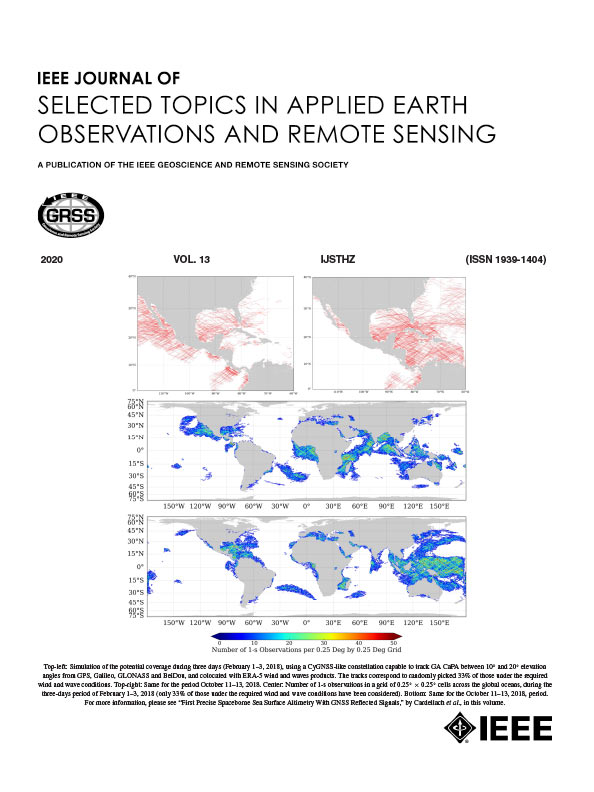Large Area Crops Mapping by Phenological Horizon Attention Transformer (PHAT) Method Using MODIS Time-Series Imagery
IF 4.7
2区 地球科学
Q1 ENGINEERING, ELECTRICAL & ELECTRONIC
IEEE Journal of Selected Topics in Applied Earth Observations and Remote Sensing
Pub Date : 2025-04-10
DOI:10.1109/JSTARS.2025.3559939
引用次数: 0
Abstract
Accurate collection of crop planting information at large area is essential for estimating agricultural productivity and ensuring food security. Different crops have varying growth cycles and phenological stages, and changes in factors such as topography, soil type, and moisture conditions can lead to diversity in crops growth status, which complicates uniform monitoring. Multiple crops mapping simultaneously with high precision presents a significant challenge due to the high spatial heterogeneity of crops distribution across vast regions. To address these challenges, this article developed an advanced deep learning crop mapping method, i.e., phenological horizon attention mechanism-transformer model (PHAT) to achieve rapid and accurate multiple crops extraction over large areas. Initially, time-series data were constructed using the normalized differential vegetation index (NDVI) dataset based on moderate resolution imaging spectroradiometer (MODIS) product. Subsequently, in the mixed pixel decomposition phase, orthogonal subspace projection and vertex component analysis were employed to identify crop types and extract endmembers. While the regular changes in the time-series NDVI reflect the phenological evolution trend among multiple crops, but the phenological characteristics difference between the same crop is extremely difficult to find. The PHAT model was therefore trained using the phenological features of endmembers to obtain the spatial distribution of crops, and to resolve the issue of varying time-series curves for the same crop across large areas. This study selected the North China Plain in 2021 as the research area, utilizing Google Earth data and Landsat 8 images to verify the approach's accuracy. Based on the MODIS NDVI data with a coarse spatial resolution of 250 m, our method achieved an OA of 90.1% for the synchronous extraction of soybean, spring peanut-summer sesame, winter wheat-summer maize, paddy rice, and rapeseed-cotton, with a RMSE of approximately 12% in 16.6 million mu of cultivated land.基于MODIS时序影像的物候视界注意力转换(PHAT)大面积农作物制图
准确采集大面积作物种植信息,是估算农业生产力和保障粮食安全的重要手段。不同作物具有不同的生长周期和物候阶段,地形、土壤类型和水分条件等因素的变化会导致作物生长状态的多样性,这给统一监测带来了困难。由于作物在广大地区的分布具有高度的空间异质性,因此高精度同时进行多作物制图是一项重大挑战。为了解决这些挑战,本文开发了一种先进的深度学习作物制图方法,即物候水平注意机制-转换模型(PHAT),以实现大面积快速准确的多种作物提取。首先利用基于中分辨率成像光谱辐射计(MODIS)产品的归一化植被指数(NDVI)数据集构建时间序列数据。随后,在混合像元分解阶段,采用正交子空间投影和顶点分量分析识别作物类型并提取端元。时间序列NDVI的规律性变化反映了多作物间物候演化趋势,但同一作物间物候特征差异极难发现。因此,利用端元的物候特征对PHAT模型进行训练,以获得作物的空间分布,并解决同一作物在大范围内的时间序列曲线变化问题。本研究选择2021年华北平原为研究区,利用谷歌地球数据和Landsat 8影像验证方法的准确性。基于粗糙空间分辨率为250 m的MODIS NDVI数据,该方法在1660万亩耕地中同步提取大豆、春花生-夏芝麻、冬小麦-夏玉米、水稻和油菜籽-棉花的OA值为90.1%,RMSE约为12%。
本文章由计算机程序翻译,如有差异,请以英文原文为准。
求助全文
约1分钟内获得全文
求助全文
来源期刊
CiteScore
9.30
自引率
10.90%
发文量
563
审稿时长
4.7 months
期刊介绍:
The IEEE Journal of Selected Topics in Applied Earth Observations and Remote Sensing addresses the growing field of applications in Earth observations and remote sensing, and also provides a venue for the rapidly expanding special issues that are being sponsored by the IEEE Geosciences and Remote Sensing Society. The journal draws upon the experience of the highly successful “IEEE Transactions on Geoscience and Remote Sensing” and provide a complementary medium for the wide range of topics in applied earth observations. The ‘Applications’ areas encompasses the societal benefit areas of the Global Earth Observations Systems of Systems (GEOSS) program. Through deliberations over two years, ministers from 50 countries agreed to identify nine areas where Earth observation could positively impact the quality of life and health of their respective countries. Some of these are areas not traditionally addressed in the IEEE context. These include biodiversity, health and climate. Yet it is the skill sets of IEEE members, in areas such as observations, communications, computers, signal processing, standards and ocean engineering, that form the technical underpinnings of GEOSS. Thus, the Journal attracts a broad range of interests that serves both present members in new ways and expands the IEEE visibility into new areas.

 求助内容:
求助内容: 应助结果提醒方式:
应助结果提醒方式:


